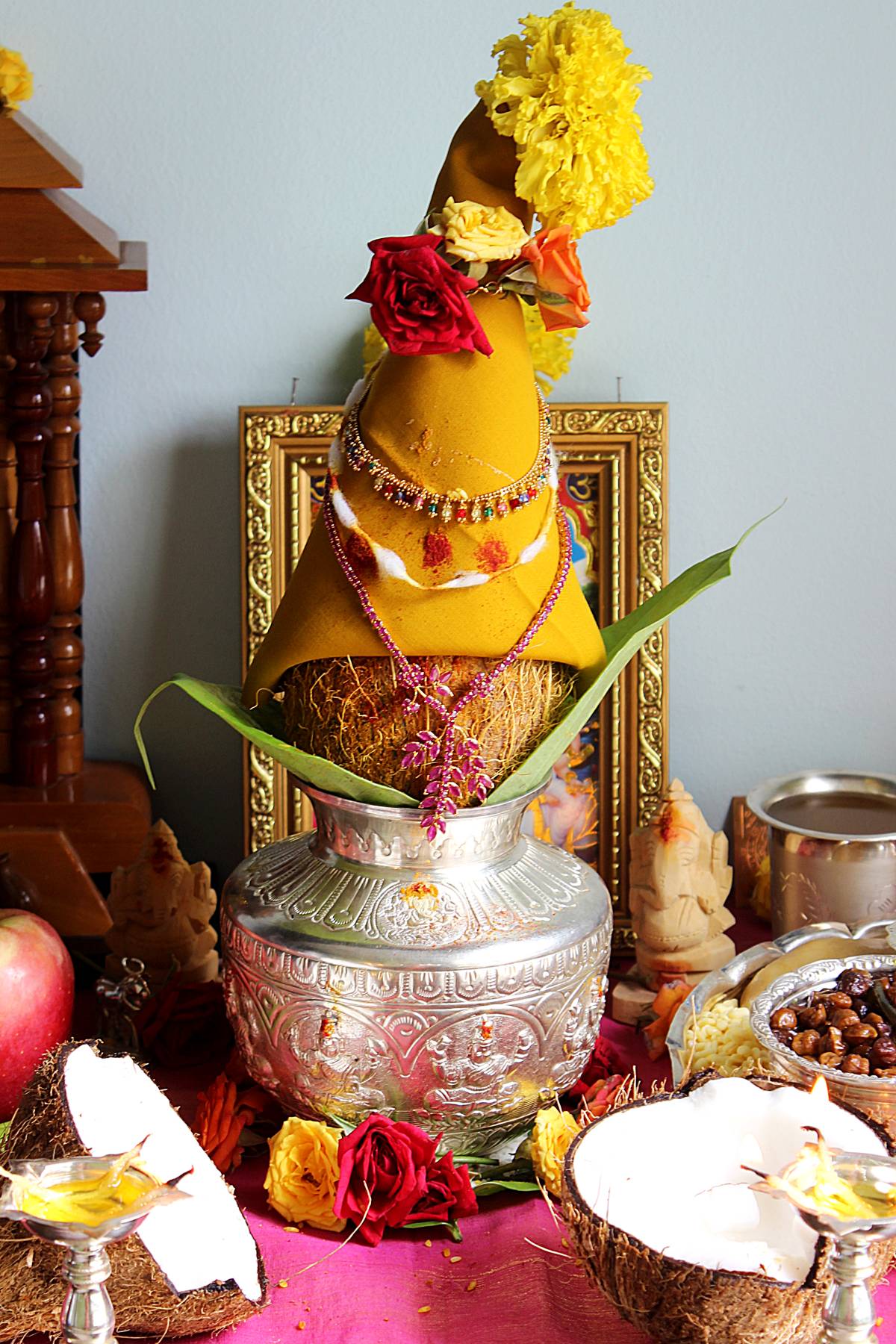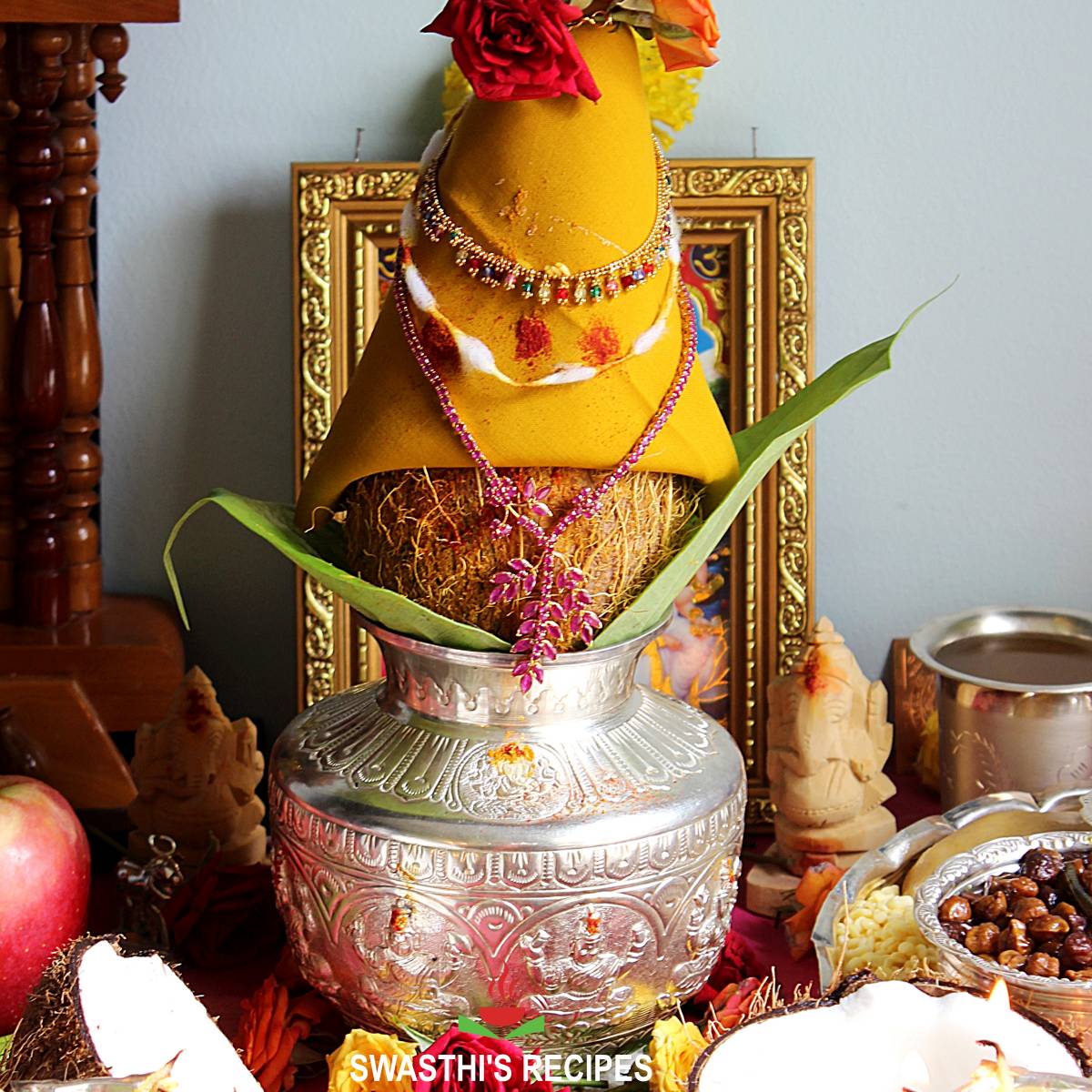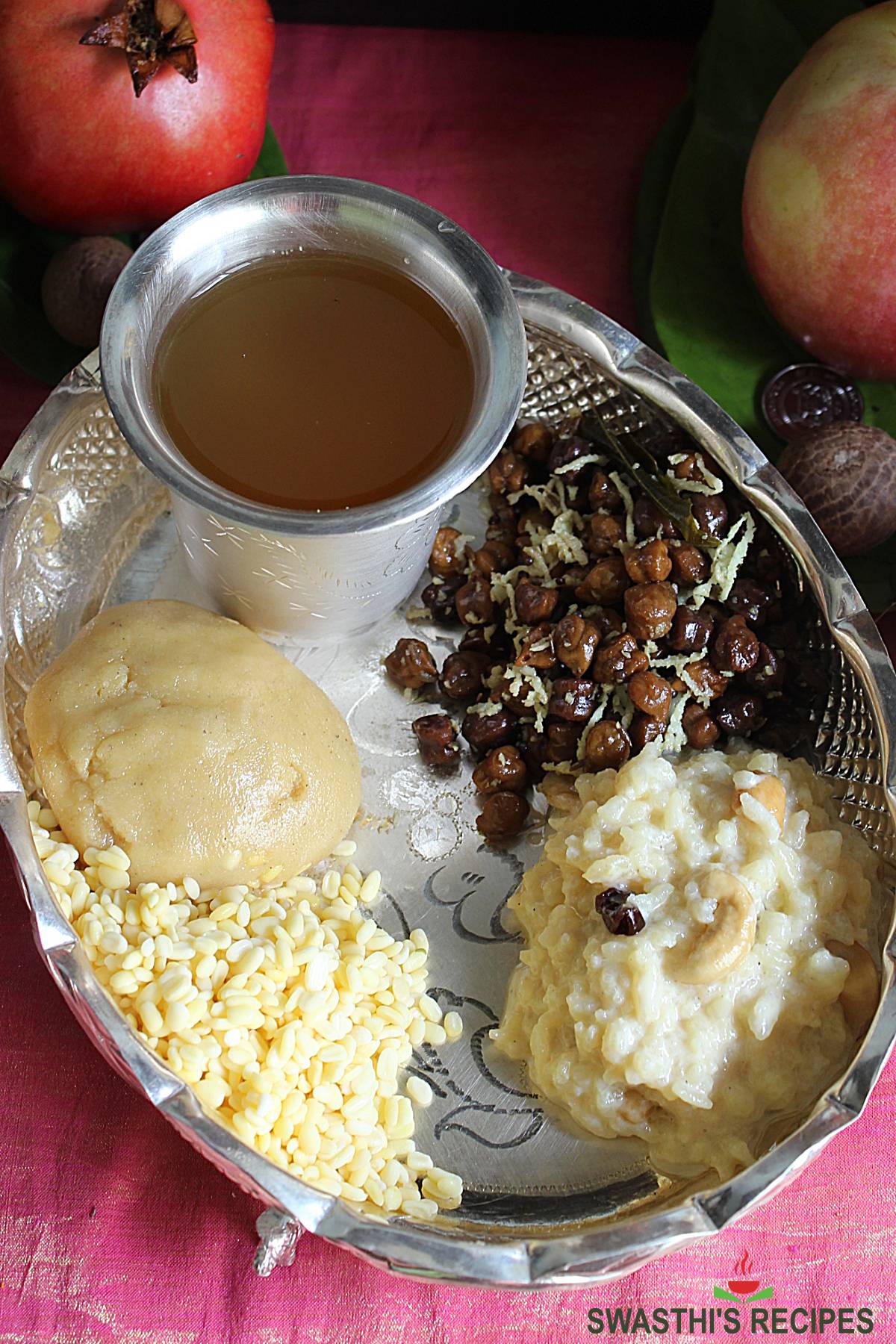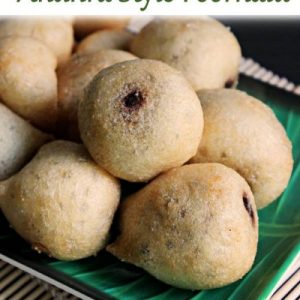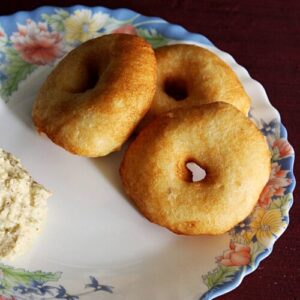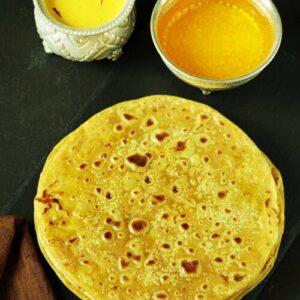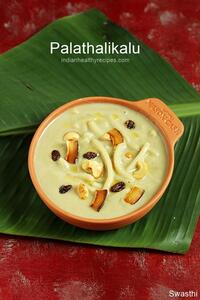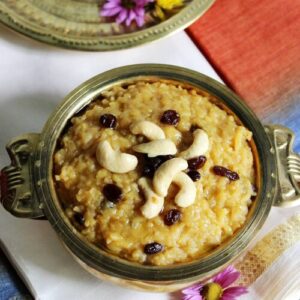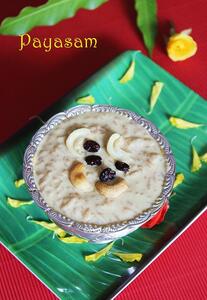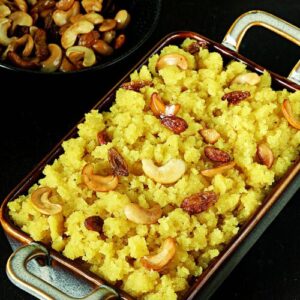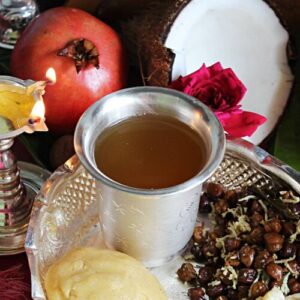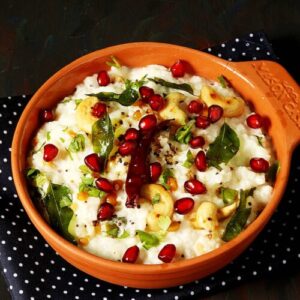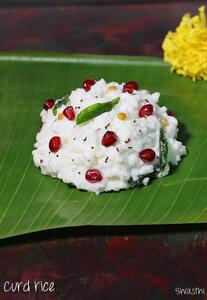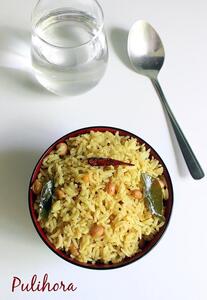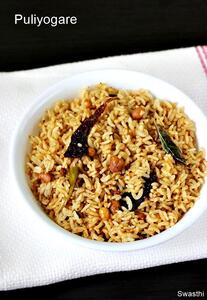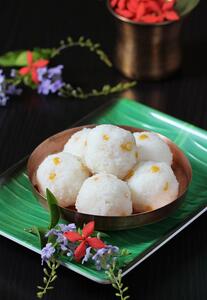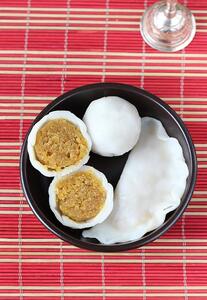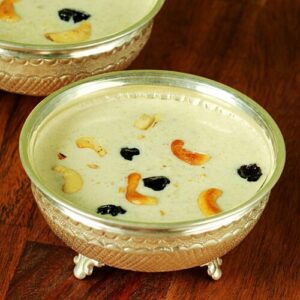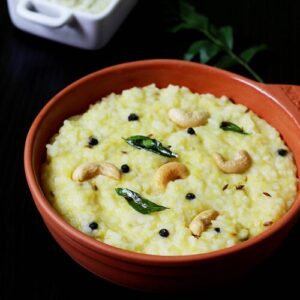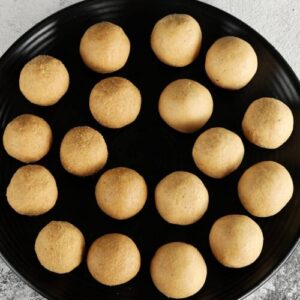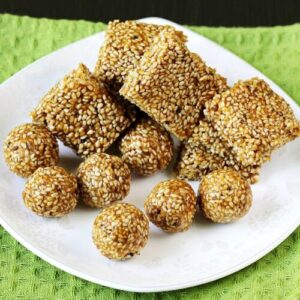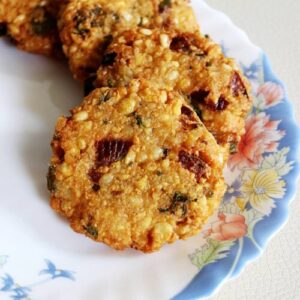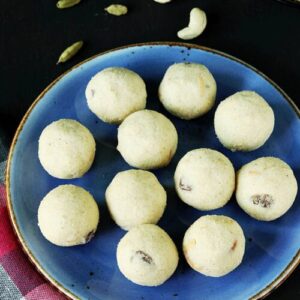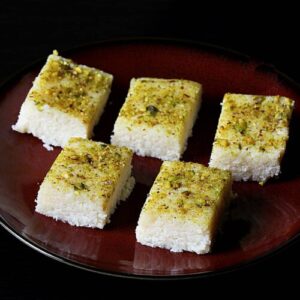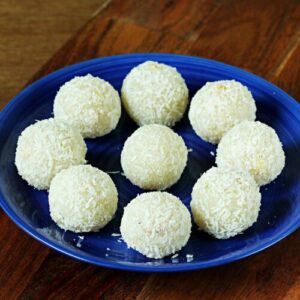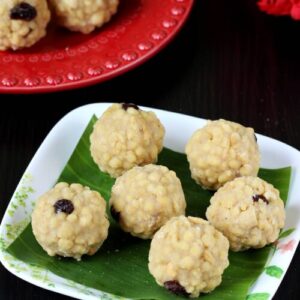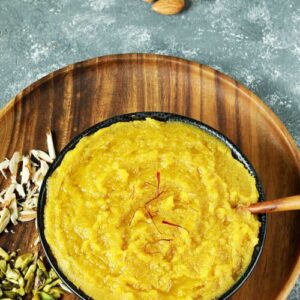This post mainly focuses to help women living outside India and want to perform the Vratham in a simplistic way without having to hunt for a lot of things for the Vratham, like idols, jewellery, cooking ingredients or a priest. Once you read this, you will know how to prepare ahead, what to buy, what to cook, whom to invite (yes/no) & how to perform the Vratham? If you are a newly married bride or someone who has never performed this Vratham earlier and wanting to perform for the first time, this post is going to help you.
About Varalakshmi Vratham
Varalakshmi is “Lakshmi who grants boons (Vara)” & Vratham is a Hindu ritual. In the full sense Varalakshmi Vratham means “Performing a ritual to please Goddess Lakshmi to grant us boons”. Varalaxmi Vratham is performed on the Friday prior to Poornima (full moon day) in the month of Shravana Masam in Telugu calendar. This year Varalakshmi Vratham is celebrated on 5th August 2022. This ritual is carried out with much devotion by married women for the prosperity of the family, mainly the husband. It is believed that Lakshmi, the mother goddess has taken 8 different forms known as Ashtalakshmi to grant us 8 different kinds of boons. The Vratha katha tells us that worshiping Goddess Varalakshmi on this day is equal to Worshiping Ashtalakshmi, the 8 forms of goddess so she grants us 8 kinds of Boons.
Aadilaxmi – Goddess of success and happinessDhanalaxmi – Goddess of wealthDhanyalaxmi – Goddess of food / grainsGajalaxmi – Goddess of abundance & prosperitySantanalaxmi – Well-being of the childVeeralaxmi (DhairyaLakshmi) – Goddess of bravery, strength and valourVidyalaxmi – Goddess of KnowledgeVijayalaksmi – Goddess of Victory
Who can perform this Vratham
Traditionally a new bride is taught by the Mother-in-Law during the first Vratham, about the customs and procedures to follow including the naivedyam foods. Usually these are passed on for generations and followed religiously. The first vratham is celebrated in the bride’s Mom’s home in the presence of a priest and the Bride groom’s family. The subsequent years you can perform the entire ritual by yourself without anyone’s presence. A lot of families do not have the custom of performing the Vratham and perform a simple Pooja (without Kalasham) and this is not called as Vratham. This Vratham is all about devotion and can be performed by anyone even if you do not have the tradition in your family. This is what is being told in the Story of Charumathi (Varalakshmi Vratha Katha). Even unmarried girls/ single women can also perform this for the well-being of their dear ones & families. However a pregnant women who has completed 6 months should not perform this Vratham. Needless to say the Hindu culture also tells us to abstain from performing any kinds of Pooja and Vratham during the times of sutakam and periods (Please do a google search to know more). This is very strictly followed by everyone and also they do not touch the items of Pooja, do not attend or hear the mantras and do not eat the foods that have been offered to the deities.
About Naivedyam Foods
Naivedyam is a traditional food offering made to the deities during Pooja. It is believed that the food offered is sanctified during the Pooja and transforms to Prasadam (blessings from god). Naivedyam is cooked with utmost care, devotion & clean mind because it is an offering you make to the god. While traditionally Panakam, Chalimidi and Vada Pappu are the quint essentials, other dishes like Paramannam, Poornam Boorelu, Garelu, Pulihora, Daddojanam, Chakara Pongali, Pesara Poli/ burelu, Kudumulu, Bobbatlu and Senagalu Thalimpu are also prepared based on the traditions & beliefs of the family. Depending on the time you can spend, decide on what you can make from below. There are no hard and fast rules for the number of dishes & it is only for your satisfaction. It all depends on how much time you are willing to spend in the kitchen. But the number always gives me a satisfaction and I don’t feel guilty of not doing something more. So I have given the timings along with the count below. You can make any number of dishes you want to and don’t care for the count/number.
What to Cook
Under 30 mins – Panakam, Chalimidi and Vada Pappu. To make the Naivedyam count 5 offer these with fruits like coconut (s), pomegranates or bananas. Under 1 hour 15 mins (if you multi task) – Paramannam and one of these Senagalu/ Sweet Pongal/ Pulihora, Daddojanam. Pair these with Panakam, Chalimidi and Vada Pappu to make the count 5 + 2 fruits. Under 2 ½ to 3 hours – Poornam Boorelu, Garelu (or Minapa Punugulu), Panakam, Chalimidi & Vada Pappu. To make the count 7, make these with Pulihora and curd rice (easier). To make it 9, offer them with 2 kinds of fruits. Other traditional items you may substitute or make for your festive meal. Some of these also make good gifts to your friends, whom you would invite on the day. On occasions I finish the Vratham with the option 1 and then make something from below. Rava KesariPala MunjaluPala ThalikaluMasala vadaPuliyogareKudumuluPoornam KudumuluVen PongaliSunnundaluChimli (sesame ladoo)Mixed dal Vada
Preparation for Naivedyam
(The previous day)
I usually cut open all new packs of food ingredients to prepare Naivedyam and not use from the packs that are already in use. The reason being we would have handled them on the days we are not clean. The previous day/night you may grate the jaggery, make cardamom powder and ghee. Also decide the menu and the number of servings you want to make. Measure all the ingredients and transfer them to the bowls, cookers, etc.Clean and rinse all the fruits the previous night and if required pat them dry. If you are cooking more than 1 rice item, you can plan to cook the rice together. Example: you can cook rice together for pulihora and curd rice. Soak the lentils and rice if making boorelu or garelu or senagalu.Keep all the poppu (tempering) items ready. Also keep the cashews and raisins ready. First thing to do in the morning, soak the rice for chalimidi, chana dal for boorelu for 1 hour, tamarind in hot water. Keep the milk out of the refrigerator as cold milk takes longer to heat. While these soak, blend the lentils and rice for garelu and boorelu.To quick cook chana dal perfectly on the stove, you may check this split chickpeas recipe.
Tips while preparing Naivedyam
Skip green chili, garlic and onion you may find in some recipes as I had made them during regular days. You can also replace green chili with pepper corn. We cool the foods before offering the Naivedyam. So I make sure I cook a bit early and cool at least the portion that’s going to be offered.
Varalakshmi Vratham Naivedyam
Preparation for Vratham
Kalasham: You will need a Chombu for Kalasham. You can use copper (Ragi), bronze (Kanchu), clay, silver or gold Chombu. Avoid using steel and any other metal consisting of iron. A quick search on amazon or Indian stores for copper Kalash will help you. You will need a new blouse piece/ cloth or a new dupatta (thin material), bangles (glass or gold/silver/artificial) &/or a chain/necklace (gold/silver or artificial).
A few coconuts – look for clean, round and well-shaped coconuts.Turmeric, Kumkum, sandalwood powder (Gandham), whole betel nut (whole supari, Areca nut), cow’s ghee, cotton wicks, Camphor & Agarbhati.Fresh flowers like hibiscus or any other, 2 dozens mango leaves or a few bunches, 2 dozen betel leaves (available in Indian and Chinese Stores).
The previous Evening/night
Place a small table in the North-East corner of your house. If this is not possible, choose a place nearest to the North-east or East of your house. Using fine rice flour, draw a Padmam on the table (Check online for Padmam Rangoli). If you don’t know how to draw Rangoli using rice flour, use a chalk. You can also use a readymade sticker.
Next Morning
(while you cook, multi task these)
Prepare akshintalu. Rub a few drops of cow’s ghee over a handful of clean rice and then with a few pinches of turmeric, Kumkum and Gandham.Prepare Thoram with 9 strings of cotton thread (white or yellow) and smear turmeric. Tie 9 flowers & betel leaves in between and place them near your idols on the same table.If you have a gold Varalakshmi Rupu that your husband or Mother-in-Law bought for you, you can clean it with cow’s milk and rinse in fresh water, the same way you clean your idols. If you prefer to wear it after the Pooja, make another thread with 9 strings of thread without flowers & leaves. Tie your rupu to it. Place it near the Pooja place. If you do not have, ignore this.Make Vasthram with clean cotton. Do not use medical grade cotton for this. You can find this online. If you don’t have, loosen some of the cotton in the center of the wick to puff it and join the ends of 2 wicks. You will have a string. Check picture 1 in the beginning.I also make a turmeric Ganesha and place on the table at the beginning of this process.From here on you will refer to this Video on Teluguone for the procedure. If you do not understand Telugu or cannot follow the priest you may refer to my steps below for reference. But I highly insist you play the video for the mantras.Place a betel leaf over the Padmam. Pour a few tablespoons of rice over the betel leaf.If you want you may apply turmeric paste all over your Chombu. I simply dot with turmeric, Kumkum and Gandham.Fill it with clean tap water. (85 to 90%). Add a pinch of turmeric, Kumkum, sandalwood powder, a few flowers, few coins (any, even gold or silver will do) and a few akshintalu.Place a bunch of mango leaves into the Kalasham. Play the mantras from the video for the shudhi.Place the coconut with the head down, over the leaves, into the water.Fold the blouse piece to a thin long strip. Then begin to fold making triangles like patti somosa. You will get a triangle shaped pouch. Place it over the coconut, so the tail of the coconut goes into the pouch.Dot the cloth with Gandham, turmeric and Kumkum, 3 to 5 times.Decorate with flowers, necklace/ chain or bangles (whatever you have).Place your kalasham over the prepared rice and betel leaf on the table.Place your varalakshmi rupu and thoram near the kalasham.Listen to the Vara Lakshmi Vratham Pooja vidhanam and Katha from Telugu one Channel.After the Katha, perform Harati. The same day before going to bed, I also move the Kalasham. The next morning we remove everything.
This Post is from the Archives. First published in August 2015. Updated & Republished in July 2022.
